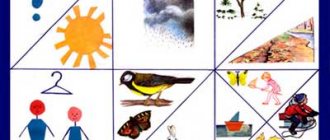This term has other meanings, see Tempo.
Speech rate
— speed of pronunciation of speech elements (sounds, syllables, words) [1].
Refers to prosodic elements[2], is one of the components of intonation. It should be noted, however, that absolute
rate of speech depends on the individual characteristics of the speaker, the characteristics of his emotional state and communication situation, and pronunciation style;
in addition, there is a relationship between the length of a speech unit and the speed of its pronunciation (striving for isochrony
): the longer the word or syntagma, the shorter the average duration of the sound (syllable) in them [1].
Speech rate can be measured[1]:
- the number of speech elements pronounced per unit of time (most often per second);
- average duration of an element.
Increasing the rate of speech is achieved by reducing the duration of both vowels and consonants, while reducing the rate is achieved mainly by increasing the duration of vowels [3].
As an intonation device, the pace of speech performs the function of contrasting more and less important components of the utterance. The most important words or syntagmas are characterized by a slow pace, segments carrying secondary information (this includes, in particular, introductory words) - accelerated. Slowing down the tempo towards the end of an utterance is one of the means of formalizing its integrity[1], in which the syntactic[4] function of intonation is manifested.
Tempo can also be understood as a characteristic that determines the degree of articulatory tension and auditory clarity of speech. So, at slow
at a tempo, words appear in
full
sound forms[5].
Notes
- ↑ 1234
Linguistic Encyclopedic Dictionary, article “Rate of speech” - Prosodic elements
- article from the Great Soviet Encyclopedia. - Rate of speech // Russian Humanitarian Encyclopedic Dictionary
- Kodzasov S.V., Krivnova O.F.
General phonetics. M.: RSUH, 2001 - Akhmanova O. S.
Dictionary of linguistic terms. M.: KomKniga, 2007 - Gallo, 2015, p. 81.
Loss of voice and its causes
Loss of voice is one of the most unpleasant consequences of a sore throat.
When a person cannot speak, his daily life turns into real agony. Even an ordinary request or question becomes a problem to voice. When the voice disappears, doctors do not recommend whispering, since whispering requires even more effort than normal conversation. To identify the cause of voice loss (aphonia), it is necessary to pay attention to additional symptoms. There are many causes of aphonia; only a doctor can determine them after an examination. The main, most common and rare causes are distinguished.
Causes of voice loss:
- infectious diseases laryngitis (acute and chronic forms) laryngotracheitis.
- inhalation of fumes of harmful chemicals (ammonia or another equally aggressive substance that is found in hazardous industries.)
- diseases of the heart, thyroid gland,
- allergic reaction (rapid swelling occurs, the person cannot speak or even breathe),
- surgical intervention (intubation, tracheotomy, thyroid surgery),
- benign or malignant neoplasms,
- stroke,
- traumatic brain injury,
- tuberculosis,
- meningitis,
- syphilis,
- botulism,
- rabies,
- professional activities - singing, lecturing - can cause overstrain of the vocal muscles and subsequent loss of voice,
- hysteria,
- traumatic neurosis,
- neurasthenia.
Literature
- Gallo, Carmine.
TED-Style Presentations: 9 Techniques for the World's Best Speakers = Talk Like TED. The 9 Public-Speaking Secrets Of The World's Top Minds. - M.: Alpina Publisher, 2015. - 253 p. — ISBN 978-5-9614-4899-3.
| This is a draft article on phonetics or phonology. You can help the project by adding to it. |
| Phonology | Phoneme • Opposition • Position • Neutralization • Differential feature • Minimal pair • Phonologization • Allophone • Phoneme variant • Phoneme variation • Archphoneme • Hyperphoneme • Alternation • Phonemic transcription |
How to treat aphonia?
There is a whole science - vocal hygiene - this group of activities aimed at preventing diseases of the vocal apparatus.
Recommended during the mutation period:
- Proper structure of vocal lessons, alternating periods of stress and rest.
- Correct vocal technique: timely switching of registers when singing; avoid using low-energy falsetto mode; achieving the technique of lower costal-diaphragmatic breathing; exclusion of auxiliary muscles of the neck and chest from voice production.
- Avoid forced sound, hard attack of sound, sharp forte, squealing, screaming.
- Singing during mutation only with an experienced teacher, active sports, hardening.
- Accurate determination of voice type, singing works characteristic of this type.
- Prohibition of outdoor performances by vocal groups and soloists at temperatures below + 15 degrees. C, singing in the noise of city traffic.
- Avoid prolonged, monotonous speech, leading to the accumulation of tension, and whispered speech.
- Quitting smoking and alcohol.
- Eliminating, if possible, unwanted noise in the classroom during speech loads.
- Timely treatment of acute respiratory infections, tracheitis.
- Work in clean rooms with sufficient humidity.
- Avoid sudden temperature changes and drinking cold drinks when overheated.
- Correct operation of microphones.
- General strengthening, hardening procedures.
- Timely treatment of ENT organs and other organs and systems
The most important conclusion from all that has been said: you need to protect your voice. If a person, due to the nature of his work, constantly strains his vocal cords, he should constantly monitor his throat. It is recommended to visit a phoniatrist at least once every six months, especially if you have previously suffered from laryngitis. Many people try to treat colds at home without visiting a doctor. Such a frivolous approach to your health can end badly. Do not self-medicate and seek help from specialists in a timely manner. Don't forget that loss of voice can signal a dangerous disease.
An excerpt characterizing the pace of speech
It was not difficult to say “tomorrow” and maintain a tone of decency; but to come home alone, to see your sisters, brother, mother, father, to confess and ask for money to which you have no right after your word of honor was given. We weren't sleeping at home yet. The youth of the Rostov house, having returned from the theater, having had dinner, sat at the clavichord. As soon as Nikolai entered the hall, he was overwhelmed by that loving, poetic atmosphere that reigned in their house that winter and which now, after Dolokhov’s proposal and Iogel’s ball, seemed to thicken even more, like the air before a thunderstorm, over Sonya and Natasha. Sonya and Natasha, in the blue dresses they wore at the theater, pretty and knowing it, happy, smiling, stood at the clavichord. Vera and Shinshin were playing chess in the living room. The old countess, waiting for her son and husband, was playing solitaire with an old noblewoman who lived in their house. Denisov, with shining eyes and tousled hair, sat with his leg thrown back at the clavichord, clapping them with his short fingers, striking chords, and rolling his eyes, in his small, hoarse, but faithful voice, sang the poem he had composed, “The Sorceress,” to which he was trying to find music. Sorceress, tell me what force draws me to the abandoned strings; What fire did you plant in your heart, what delight spread through your fingers! He sang in a passionate voice, shining at the frightened and happy Natasha with his agate, black eyes. - Wonderful! Great! – Natasha shouted. “Another verse,” she said, not noticing Nikolai. “They have everything the same,” thought Nikolai, looking into the living room, where he saw Vera and his mother with the old woman. - A! Here comes Nikolenka! – Natasha ran up to him. - Is daddy at home? - he asked. – I’m so glad you came! – Natasha said without answering, “we’re having so much fun.” Vasily Dmitrich remains for me one more day, you know? “No, dad hasn’t come yet,” said Sonya. - Coco, you have arrived, come to me, my friend! - said the countess's voice from the living room. Nikolai approached his mother, kissed her hand and, silently sitting down at her table, began to look at her hands, laying out the cards. Laughter and cheerful voices were still heard from the hall, persuading Natasha. “Well, okay, okay,” Denisov shouted, “now there’s no point in making excuses, barcarolla is behind you, I beg you.” The Countess looked back at her silent son. - What happened to you? – Nikolai’s mother asked. “Oh, nothing,” he said, as if he was already tired of this same question. - Will daddy come soon? - I think. “Everything is the same for them. They don't know anything! Where should I go?” thought Nikolai and went back to the hall where the clavichord stood. Sonya sat at the clavichord and played the prelude of the barcarolle that Denisov especially loved. Natasha was going to sing. Denisov looked at her with delighted eyes.
Opening of resonators
First, let's recall what resonators are and expand the knowledge about resonators obtained in lesson No. 1. Resonators are natural amplifiers of our voice inside our body. They allow us to make our voice higher or lower, louder or quieter, and to enrich the color of our timbre. By learning to control the flow of air and direct it into a particular resonator, you can open up your voice in a new way and instantly change many of the characteristics of your voice that you learned about in the first part of the lesson.
So, what kind of resonators are there? In different sources you can find different options for classifying resonators. Somewhere the main resonators include the pharynx, trachea, oral and nasal cavities. Some believe that there is a chest resonator and a group of head resonators, which include cavities above the vocal cords: the upper larynx, pharynx, oral and nasal cavities, paranasal sinuses, parietal bones.
The concept of “chest resonator” from an anatomical point of view is somewhat arbitrary, but it is very convenient for describing the localization of sensations during voice training, so it is advisable to use just such a conventional term. Due to the fact that our course is focused on the development of practical skills, we will use the most intelligible and convenient system, which divides all natural voice amplifiers into four main components that can be worked with in detail.
Resonators that can be controlled to produce sound:
- Chest resonator.
- Mouth resonator.
- Nasal resonator.
- Head resonator.
One way or another, resonant cavities are closed spaces containing air that is capable of resonating, i.e. vibrate when hit by a sound wave. In other words, it is the air contained in the cavities that resonates, not the cavities themselves. Due to the fact that we can change the shape and volume of the cavity, we can change the shape and volume of the resonator and, accordingly, the strength of resonance and the sound that is obtained.
What does it mean to change the shape and volume of cavities? We can, for example, expand the lower part of the lungs and increase the volume of the chest resonator. We can open our mouth wider (we train with the 2-fingered mouth exercise!) and increase the volume of the oral resonator. In addition, by making a grin and changing the shape of the mouth resonator, we can send a more powerful air flow up into the head and thus change the sound of the head resonator.
All resonators are interconnected, capable of interacting and mutually influencing each other. Few people use the full capabilities of all resonators in everyday life. Usually one or at most two resonators work the most.
Which resonator works best for you:
- If a person’s voice is low and muffled, this means that his chest resonator is primarily used.
- If a person's voice is too high, squeaky and/or half-childish, this means dominance of the head resonator.
- If a person has a well-audible voice and intelligible speech, he has an active oral resonator, plus a head or chest and, possibly, a nasal resonator.
- If the voice is nasal, the person is usually described as “speaking through his nose.” This is the predominance of the nasal resonator.
By the way, a nasal voice and an excess of “nose” in the voice is a problem and inconvenience only for an unenlightened person. Knowledgeable people know that a developed nasal resonator is the path to connecting all resonators and, accordingly, a bright, beautiful voice. You will learn more about the nasal resonator if you read the article by Italian surgeon, otolaryngologist and phoniatrist Franco Fussi La voce nel naso (“Voice in the nose”) [F. Fussi, 2017]. In the meantime, we’ll figure out why we need to connect the resonators.
What does connecting resonators give:
| 1 | volumetric and powerful sounding voice; |
| 2 | excellent audibility in audiences of any size; |
| 3 | the ability to reconfigure your voice during the performance; |
| 4 | the ability to optionally make your voice higher, lower, louder, more intimate, softer, more gentle, etc.; |
| 5 | more opportunities for intonation and expressiveness of speech; |
| 6 | more possibilities for enriching individual timbre; |
| 7 | ability to smooth out transitional notes (for singers). |
In other words, connecting resonators makes it possible to make maximum use of the functionality of each resonator and achieve the so-called synergetic effect, when interacting resonators enhance each other’s action. But first you need to work on the development of each resonator. Therefore, let’s figure out what each resonator is needed for and how to develop it.
Resonator functions:
- Chest resonator - its operation provides a powerful sound to the voice, can help make the voice velvety and intimate, it gives access to low notes and (attention!) makes high notes more expressive and allows you to get rid of the squeakiness in the voice, as if only the head resonator is working.
- Head resonator - its work gives the voice flight, sonority, lightness, it provides access to high notes.
- Oral resonator – provides a more open, loud sound of the voice, helps relieve throat constrictions, and helps speak more freely.
- Nasal resonator - connects all the resonators, gives clarity and clarity to the sound of each resonator and the voice as a whole.
In addition, a nasal resonator is absolutely necessary for those who would like to master pop-jazz vocals or learn to sing rock. Looking ahead, let's say that it is with the help of the nasal resonator that work is being done on mastering the mixed vocal technique, which provides a bright and high-quality combined sound of the chest and head resonators. How to work on the development of resonators? Especially for you - the most basic diagnostics, allowing you to feel the operation of each of the resonators.
How to feel and develop the work of resonators:
- To feel the work of the chest resonator, you can put your hand on your chest, place your voice on a support and say something between “ge” and “he” (similar to the letter “g” in the Ukrainian language). This is exactly how you can develop a chest resonator: repeat this sound lower and lower. You can control the process using Pano Tuner.
- To feel the work of the head resonator, you need to make the sounds “i-i-i”, “u-u-u”, “i-i-u-u-u”, “woo-u-u” (in turn or at your choice ). In this case, feel the vibration above and between the eyebrows, in the forehead and possibly the back of the head. To complete the sensations, you can move your eyebrows. You can develop a head resonator on any of these sounds if you perform it coherently, smoothly, without pauses (legato) from top to bottom, i.e. from high notes to low notes.
- To feel the work of the oral resonator, you just need to open your mouth wider and say “ah-ah” so that you feel the sound in the area of the teeth and hard palate. Don't forget to breathe and support your voice!
- To feel the operation of the nasal resonator, we need to pronounce the sound “n-n” or “mm” as if we want to hum or whine. Your mouth should be slightly open (you can add a slight smile), and you should feel vibration in the area of your sinuses and upper lip. You might feel like sneezing.
Do not try to pronounce letters loudly, sharply, or strain your vocal cords. Don’t forget to inhale, make sure your sides are swollen and your shoulders don’t rise.
After you feel the operation of each resonator, work on their development and confident sound using the proposed exercises, you can move on to connecting the resonators . We have already worked out all the letters necessary for this separately, but now we will need to practice pronouncing them together.
For example, you can teach the head and nasal resonators to sound beautiful together using the sound “gi-i-i.” We pronounce it slowly, without pauses, from top to bottom (from high to low notes). Don’t forget to inhale, make sure your sides are swollen and your shoulders don’t rise.
The head and mouth resonators can be connected using the sound “ee-ya-a”, something like a drawn-out “I”, only with a more pronounced “i”. We also pronounce it slowly, without pauses, from top to bottom (from high to low notes). And don’t forget to inhale, make sure that your sides are swollen and your shoulders don’t rise.
And in order for the head, nasal and oral resonators to sound, you need to combine both exercises and say “gi-i-ya-a-a”. We also pronounce it slowly, without pauses, from top to bottom (from high to low notes). And also don’t forget about inhaling, make sure that your sides are swollen and your shoulders don’t rise.
And finally, to connect the chest and mouth resonators, you need... just laugh, but do it brightly and convincingly: “ha ha ha.” Everything is logical here: the letter “x” is needed for the chest resonator, the letter “a” for the oral one, therefore, their connection contributes to the connection of the resonators.
This way you will consistently work out all the necessary connections (head-nose, head-nose-mouth, mouth-chest) and improve the sound of your voice throughout the entire range. And remember that each subsequent step in working on the basic properties and characteristics of the voice is not a reason to forget what you learned the day before at the previous stage. Correct breathing and support for the voice should always be present, as well as clear diction and adequate articulation.
By the way, if you watched lesson No. 3 from Polina Gagarina to the end, you already know that natural sounds - crying and groaning - contribute to the opening of resonators. And if you want to work on resonators with music, check out the next tutorial. There will also be more complex breathing exercises:
As additional literature, we can recommend the book “Speak beautifully and confidently. Voice and speech production" [E. Shestakova, 2013]. There, many nuances are discussed in more detail and, perhaps, you can learn something useful for yourself.
Let's summarize the lesson. Today you learned in detail about the basic properties and characteristics of the voice: strength, height, timbre, flight, mobility, tone, tempo and euphony. And also that these characteristics can be improved if you practice breathing, find support for your voice, practice diction, articulation and learn to fully use all resonators.
We wish you success in working on the course and suggest you take a test to assess your understanding of the lesson material.








